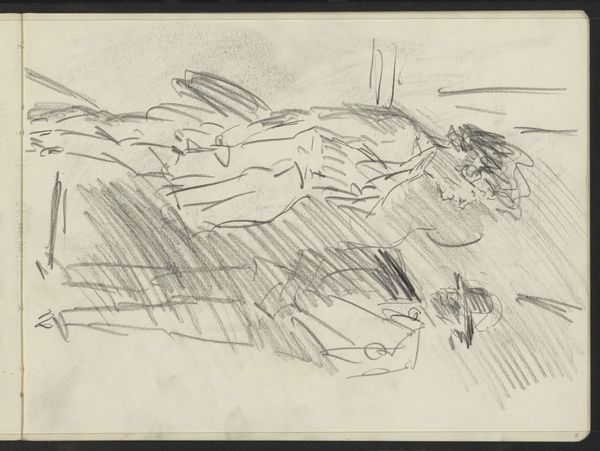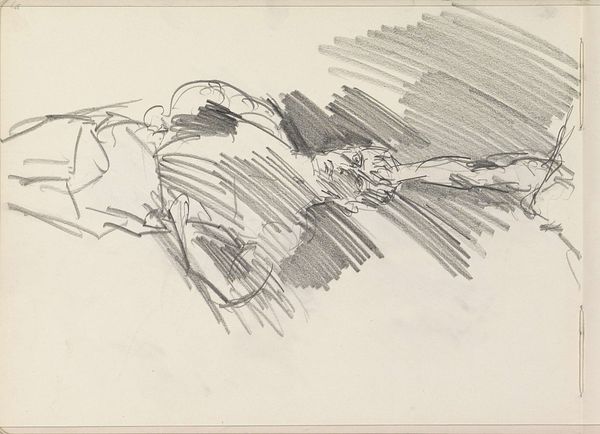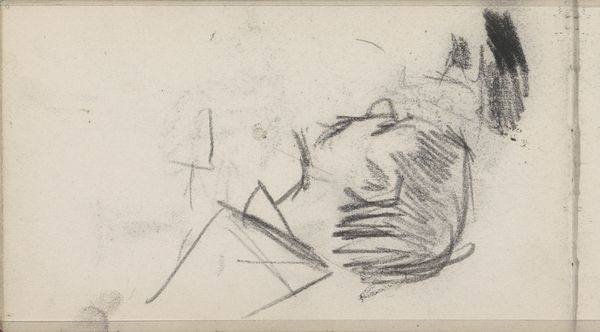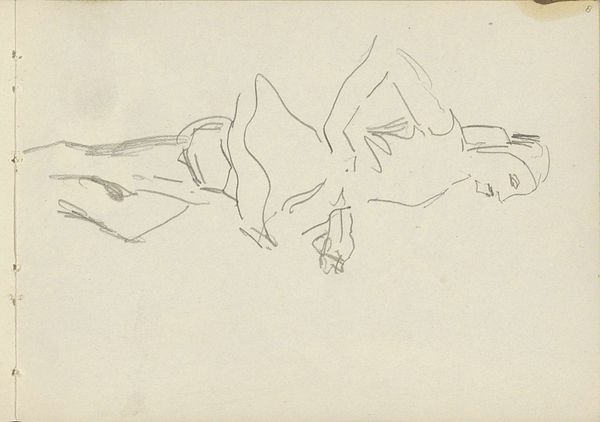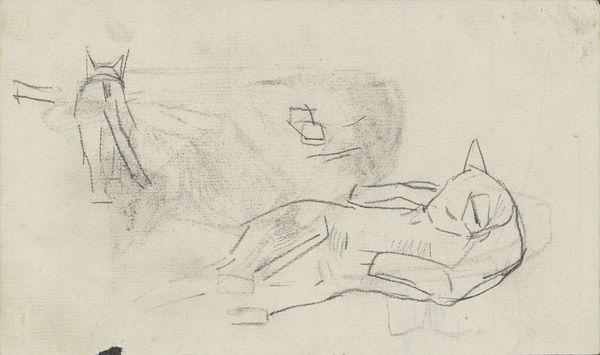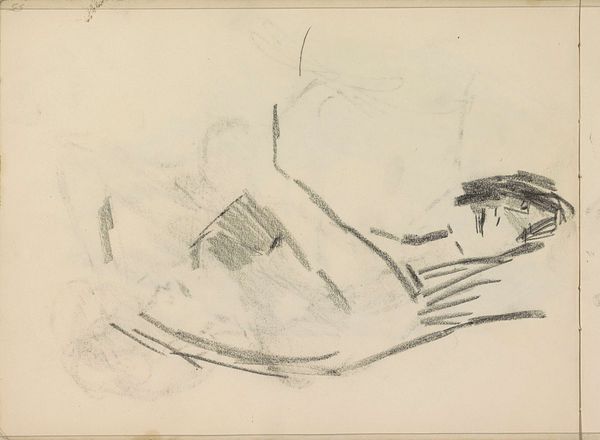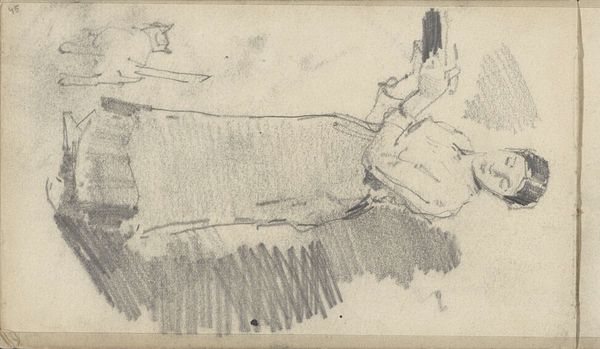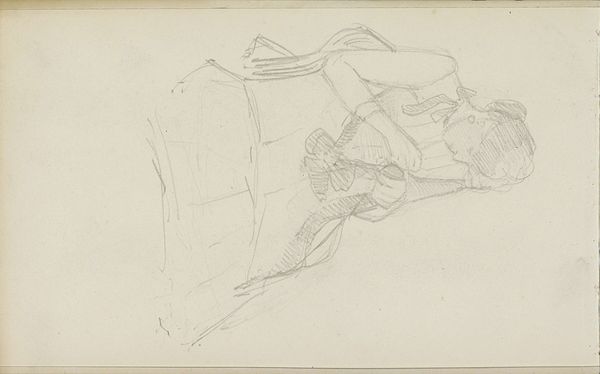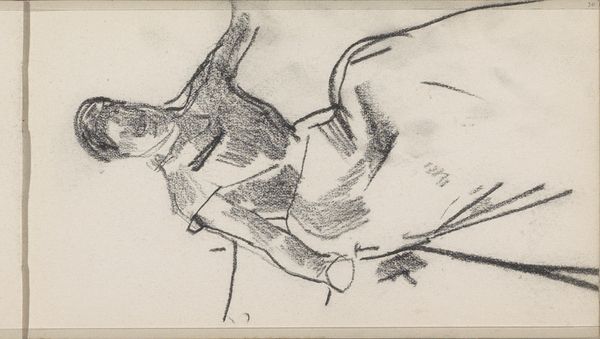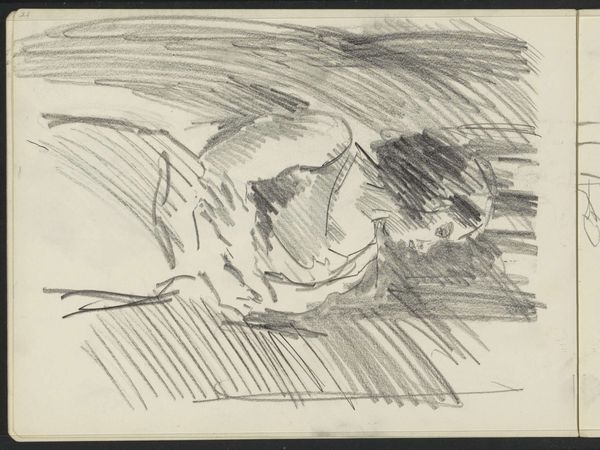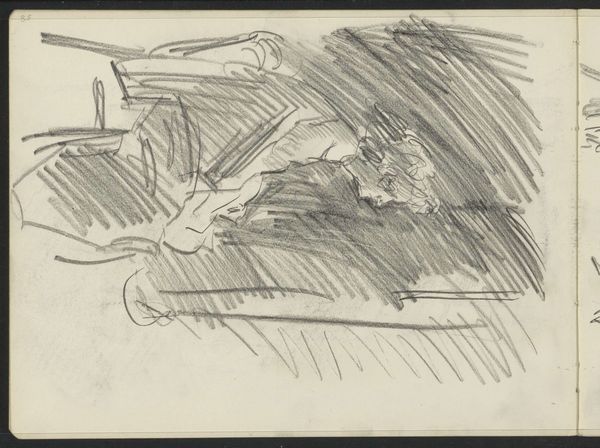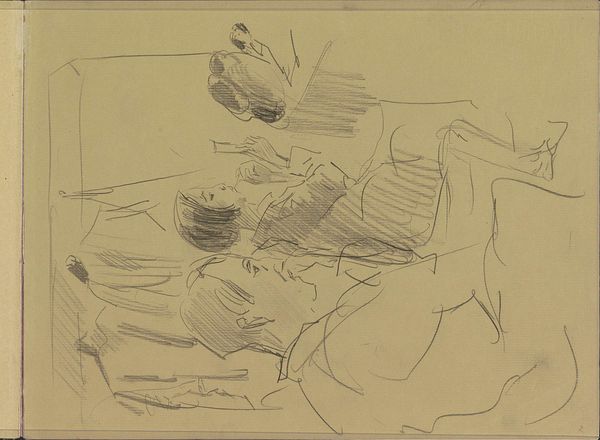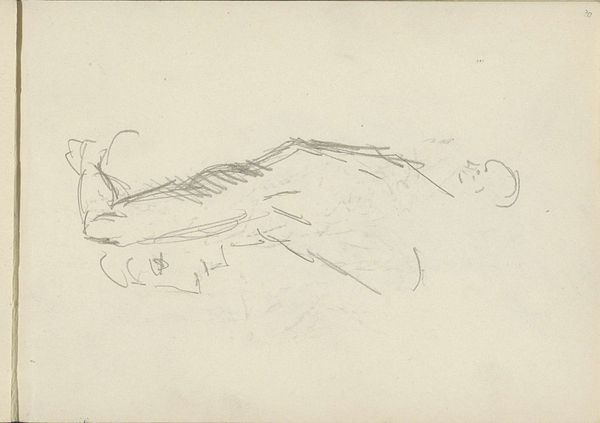
Copyright: Rijks Museum: Open Domain
Curator: This intriguing sketch by Isaac Israels, dating sometime between 1875 and 1934, is titled "Vier figuren met hoofddeksels, in profiel" or "Four figures with headdresses, in profile". It's a quick study, done with pencil and ink, currently held here at the Rijksmuseum. What's your first impression? Editor: Chaos. Utter chaos, yet somehow… deliberate? It's almost violently informal. The rapid strokes suggest a fleeting observation, like capturing figures in a liminal space – waiting perhaps? Who are these figures, and what were they doing to inspire such energetic, immediate rendering? Curator: Israels was, of course, part of the Dutch Impressionist movement. And this absolutely reads as a preliminary study, a search for form more than a finished work. He seems interested in the symbolic weight of the head coverings – the figures are differentiated mainly by the style and adornment of what they wear on their heads. There's a clear fascination with detail amidst the general sketchiness. Editor: Exactly. Head coverings in many cultures signify status, religious affiliation, or even resistance. These profiles, though vague, project an air of social identity. Israels was working in a time of rapid industrial and social change, the "head covering" can mean to resist that too. How much can clothing make the person? Or is this merely an investigation of shape and form that unintentionally opens discussions on the construction of identity? Curator: Perhaps a bit of both? We shouldn't assume Israels was consciously thinking of them as symbols, but his interest clearly extends beyond mere representation. The sketch captures a mood, a shared… expectancy perhaps, given the focus on the profiles facing the same direction. In my view, this piece gives some context for how the role of art as a marker for the shift between traditional portraiture, and modern observation based sketches, occurred over time. Editor: It's also impossible to ignore the social gaze embedded in this rapid sketch. Israels, a man observing… whom? And from what perspective? Does his fleeting rendering inadvertently participate in an act of social and cultural marking? Food for thought, in what would otherwise be called just an unfinished sketch. Curator: Indeed. It shows us how much the simplest sketches, the barest outlines of figures, can still resonate with layers of meaning and invite enduring questions. Editor: And it demonstrates that a 'quick study' can itself be a starting point for much larger discussions.
Comments
No comments
Be the first to comment and join the conversation on the ultimate creative platform.
